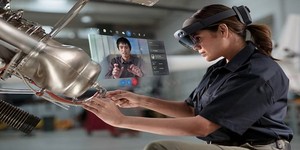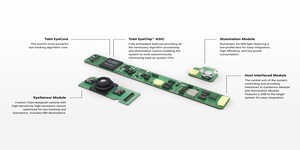VR bods partner for VirtualLink cable spec
July 18, 2018 | 11:41
Companies: #amd #microsoft #nvidia #oculus-vr #valve #virtuallink

A newly-formed consortium formed by AMD, Microsoft, Nvidia, Oculus VR, and Valve have announced a standard for cramming all the signals required for a virtual reality headset down a single cable with a USB Type-C connector: VirtualLink.
Current generation virtual reality hardware is, it must be said, somewhat clunky, thanks in no small part to the range of cables and connectors that are required to make them work. While companies like HTC have been investigating doing away with wires altogether via high-bandwidth and low-latency wireless connections and battery packs, the VirtualLink consortium has a different proposal: Simplifying things down to a single cable with a single USB Type-C connector on the end.
Based on the Alternate Mode function of the USB Type-C standard, which allows the cables and connectors to carry non-USB signals, the VirtualLink standard carries four high-speed DisplayPort High Bit-Rate 3 (HBR3) lanes, a single USB 3.1 data channel, and 27 watts of power for the headset's displays and sensors.
'Simulating reality requires incredible visual fidelity and processing power,' explains Jason Paul, general manager of gaming and VR, at Nvidia, one of the founding members of the VirtualLink consortium. 'With a single, high-bandwidth cable, VirtualLink unlocks the full potential of the PC to power amazing VR experiences.'
'At Oculus, we're committed to making VR easily approachable for a wide variety of people,' adds Nate Mitchell, head of Rift at Facebook-owned Oculus VR, of the standard. 'A consolidated connection point is critical in removing barriers to experiencing high-powered PC VR. With the adoption of VirtualLink technology, purpose-built for VR, we look forward to helping push the industry forward into the next phase of VR.'
'We have been involved on VirtualLink from the beginning,' adds Microsoft's Scott Evans, general manager of the company's Windows Mixed Reality business division, 'and are supportive of industry-standard approaches for emerging Windows experiences including mixed reality.'
The standard, which has not yet been finalised, is available in 'advanced overview' form to companies interested in implementing it, but the absence of VR giant HTC from the list of companies involved in the project - despite the presence of Valve, which worked with HTC to develop the Steam VR platform supported by the Vive headset family - means it may not have the industry support it needs to gain traction, though having both of the major discrete graphics processor companies on board is a strong start.
More information is available on the official website.

MSI MPG Velox 100R Chassis Review
October 14 2021 | 15:04








Want to comment? Please log in.